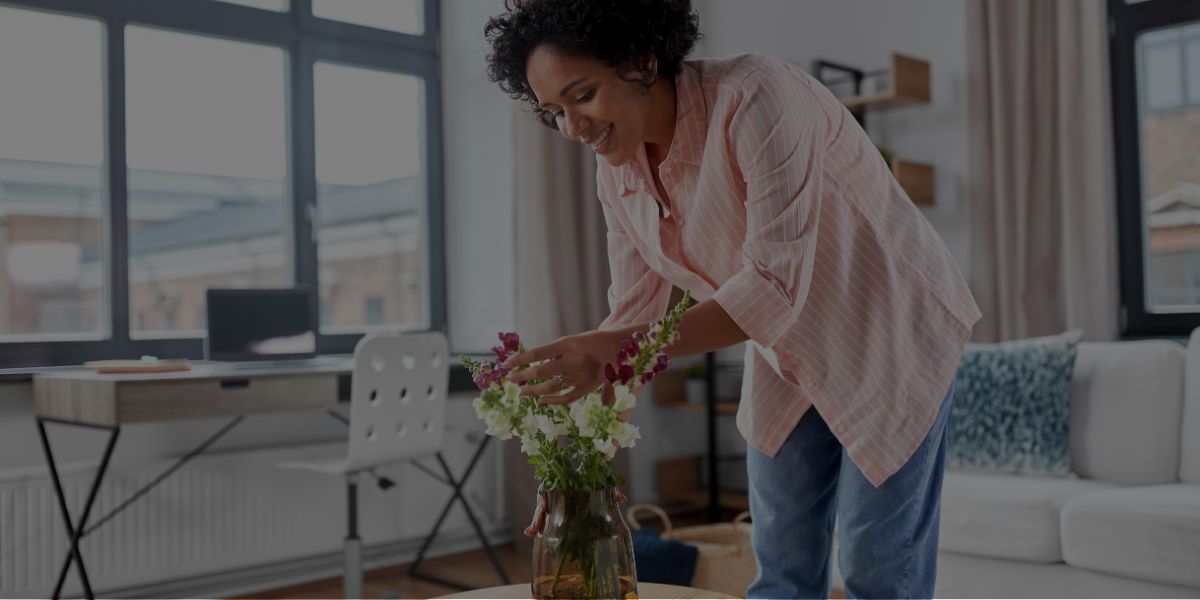If you dream of becoming an interior decorator, then you know that having the right tools is essential to your success. In this article, we will list 12 of the best tools for interior decorators. These tools will help you better your skill-set, conduct business more efficiently, attract new clients, and increase your income.
So, what are these essential tools?
Keep reading to find out!
12 of the Best Tools to Help Interior Decorators
We’ve compiled a list of 12 of the best tools to aid you in your design career. These will help you obtain greater success and make your clients happier with the final results!
In this article, we will focus specifically on:
- SketchUp
- CAD software
- Paint chips
- Fabric samples
- Measuring tools
- Paint brushes
- Wallpaper samples
- Window treatments
- Area rugs
- Home staging tools
- Business management tools
- Your network
Let’s dive a little deeper into each one…
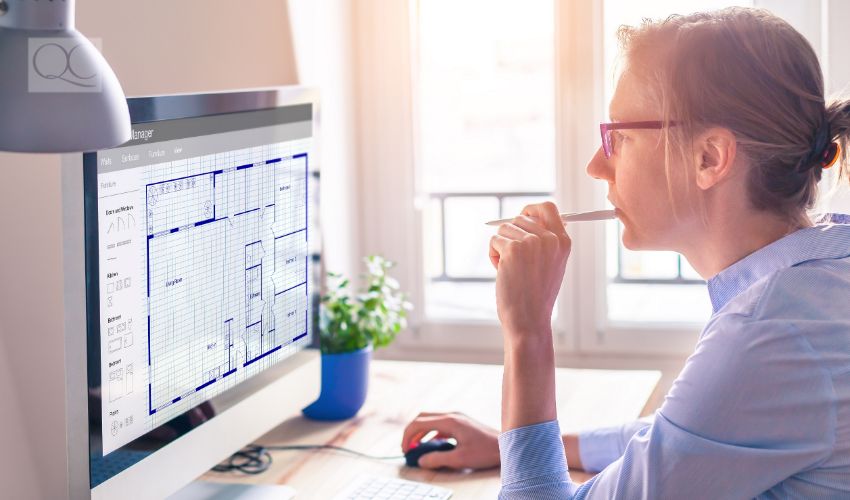
1. SketchUp
If you’re looking for a powerful, yet easy-to-use design software, SketchUp is your best bet! This program is perfect for interior decorators because it allows you to create detailed drawings of your designs. Moreover, you can also use SketchUp to create virtual tours of your work. This can be very helpful when trying to sell your services to potential clients!
SketchUp offers a free 30-day trial for new users. Following your free trial, you can choose from 1 of 3 SketchUp plans to subscribe to:
- Shop ($119 USD/year)
- Pro ($299 USD/year)
- Studio ($699 USD/year)
If you’ve ever wondered how some of the most talented interior decorators are able to visualize their designs before they even get started, then this tool is a definite must-have!
2. CAD Software
Computer-aided design (CAD) software is another essential home decorating tool. CAD software enables you to create precise drawings of your designs, which can be extremely useful when working with clients and/or contractors. There are many different types of CAD software available on the market, so be sure to do some research before choosing one!
Some examples of commonly-used CAD software include:
All of these software programs have different features. As such, be sure to choose one that meets your specific needs. Many CAD software programs offer free trials, allowing you to try before you buy!
Pro Tip: Once you’ve chosen a CAD software program, be sure to take some time to learn how to use it. This will save you a lot of headaches down the road!
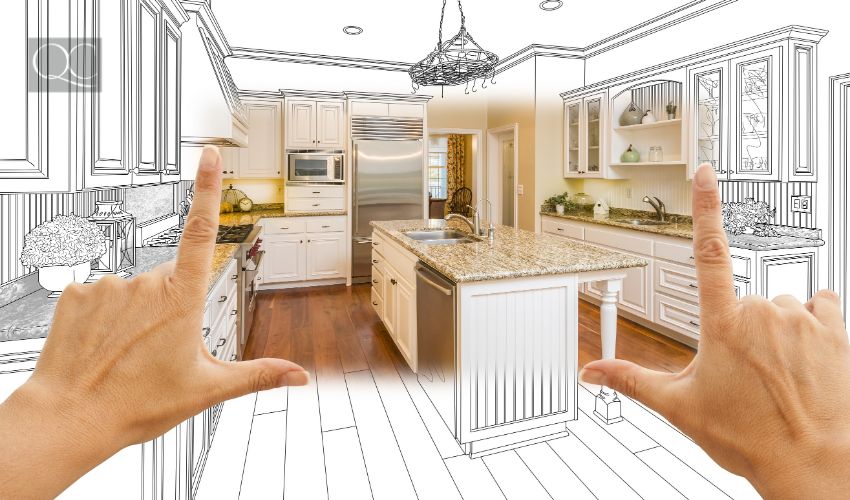
3. Paint Chips
Paint chips are a must-have for any interior decorator! They’re great because they allow you to see what your wall paint color will look like in a room before you even start painting. You can find paint chips at most hardware stores, as well as online retailers like Home Depot.
It’s worth noting that you should always carry several different types (and colors) of paint chips with you when meeting clients for the first time. This way, if they don’t know exactly what type of shade they want their walls painted in, it’ll be easy to show them some options from your collection!
A good rule of thumb is that every homeowner has at least some idea about how he/she wants his/her house decorated. However, they don’t always know how to express this vision clearly. Paint chips can help bridge the gap between what clients envision and what you actually do!
Want to add color consulting services to your design business? QC Design School’s self-paced, online Color Consultant Course can turn YOU into an International Color Consulting Professional (ICCP)in as little as 3-6 months!
4. Fabric Samples
Fabric samples are a must-have for any interior decorator who works with clients! Not only do they help you get an idea of the client’s style; they also allow you to see how different fabrics will look in a room. You can find all sorts of fabric samples at most fabric stores, as well as online retailers like Fabric.com or JOANN Fabrics.
When meeting with clients, be sure to bring several different types of fabric samples with you. This will give them a better idea of what type of fabrics they want in their home. It’ll also show them that you’re willing to put in the extra effort to make sure they’re happy with the final results!
It’s worth noting that some homeowners are hesitant to use a lot of fabric in their home. If this is the case, you can suggest using a printed fabric instead. This will add some visual interest to the room without using too much fabric!
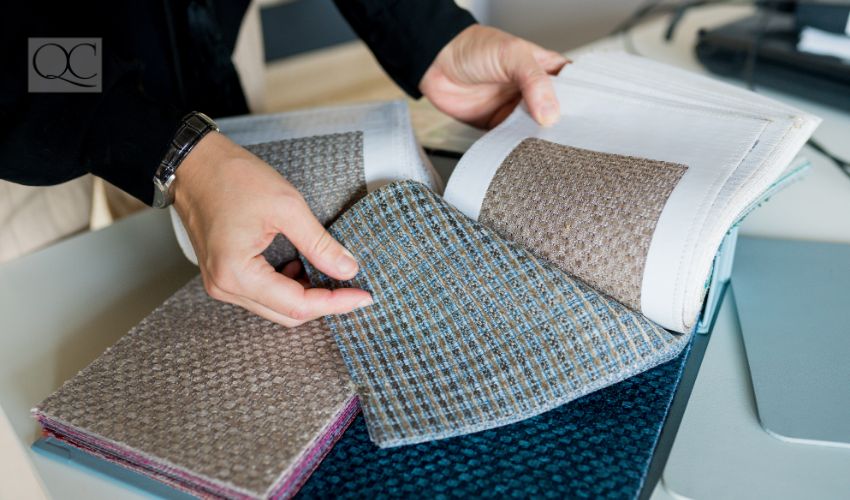
5. Measuring Tools
One of the most important tools for any interior decorator is a good set of measuring tools! Not only do they help you measure spaces accurately; they also allow you to take accurate measurements of furniture and other decor items. This is essential when trying to figure out how much space an item will take up in a room – or if it’s even possible to fit something into a certain space!
There are all sorts of different types of measuring tools available on the market. So, be sure to choose one that meets your specific needs. Measuring tapes, rulers, and squares are the most common types of measuring tools used by interior decorators.
Furthermore, when meeting with clients, always be sure to bring along your measuring tools! This will show them that you’re willing to put in the extra effort to make sure they’re happy with their final results!
It’s also worth noting that some interior decorators use digital measuring tools. These tools allow you to take measurements of a room without having to actually measure it physically! This can be really helpful when you’re trying to figure out the layout of a room.
Digital measuring tools are available in a variety of different formats. So, as we already mentioned above, ensure that you choose one that meets your specific needs!
New to taking measurements? This blog article will teach you everything you need to know to get started!
6. Paint Brushes
When it comes to painting walls, a good paint brush is essential! Firstly, they help you apply the paint evenly. Secondly, they also allow you to get into tight spaces with ease and precision. This is especially important when painting around trim or ceilings!
There are all sorts of different types of paint brushes available on the market. The 2 most common types of paint brushes used by interior decorators are foam brushes and bristle brushes.
Foam brushes are great for applying primer and paints with a low sheen. They’re also really easy to clean, which is a definite plus! Bristle brushes, on the other hand, are perfect for applying high-sheen paints and varnishes. They also help to create a smooth finish on walls and ceilings.
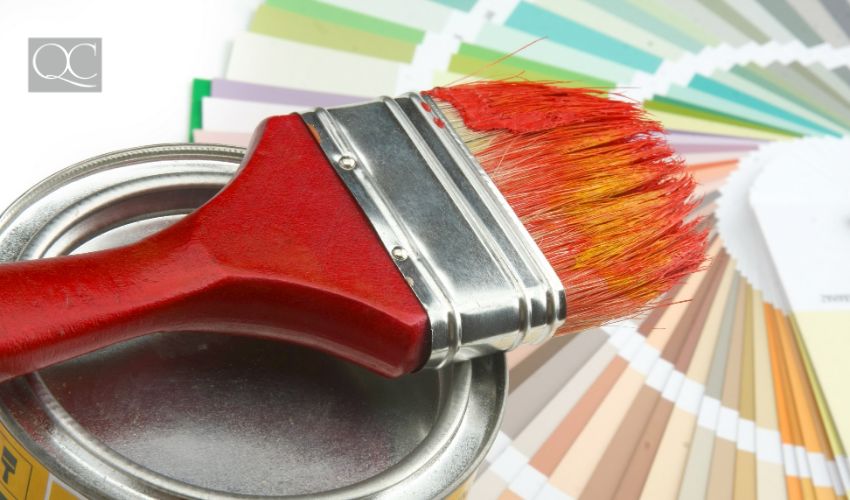
7. Wallpaper Samples
If you’re thinking of wallpaper as an option for a client, be sure to bring along some wallpaper samples! Wallpaper samples are a great way to show clients how you can use different textures and colors to create unique looks. Not only will this give the client a better idea of what the wallpaper will actually look like in their home; it’ll also help them decide if they want to use a pattern vs. a solid color.
There are all sorts of different types of wallpaper available on the market. For this reason, it’s important that you bring along several different types of wallpaper samples with you when meeting with clients. This way, they can have a better understanding of the various options at their disposal!
Keep in mind that some homeowners are hesitant to use wallpaper in their home. If so, you can always suggest using wall decals instead. Wall decals are a great way to add some visual interest to a room without using too much wallpaper.
8. Window Treatments
Window treatments are an essential part of any room! As such, they’re one of the best tools for interior decorators. Not only do they add privacy and security; they also help to control the amount of light that comes into a room.
(This is especially important during the summer months, when the sun can be really bright!)
Since there are endless window treatment options available out there, it’s important to know which ones would be best for your client’s specific needs. The most common types of window treatments used by interior decorators are curtains, blinds, and shutters.
Curtains come in a variety of different fabrics and styles, and are perfect for adding some color and texture to a room. Blinds are great for homeowners who want to have more control over the amount of light that comes into their home. Shutters, on the other hand, are a little bit more expensive than curtains or blinds. That said, they offer excellent privacy and security, so they’re worth the investment.
It’s important to remember, though, that not all window treatments are appropriate for every type of room. For example, you wouldn’t want to use heavy curtains in a room with lots of natural light. Similarly, you wouldn’t want to use shutters in a room that doesn’t have any windows!
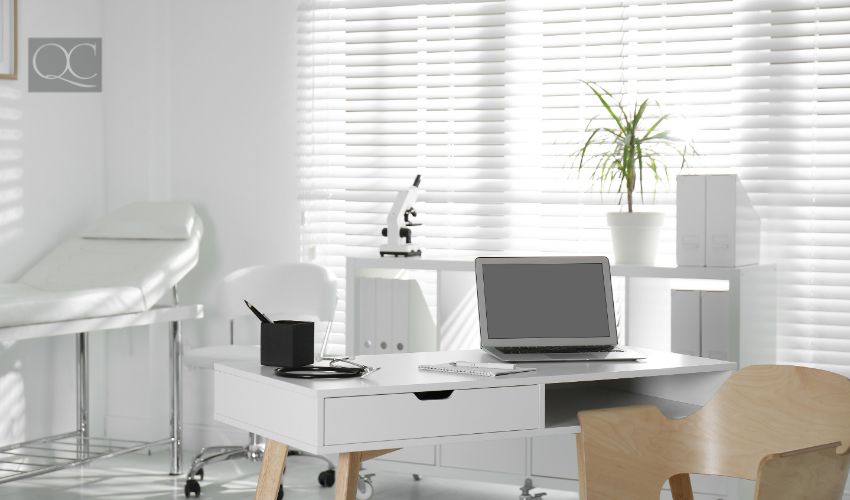
9. Area Rugs
Area rugs are a great way to add some color and texture to a room. They help to define different areas within a space, while also protecting the flooring from dirt, dust, and scratches. The most common types of area rugs used by interior decorators are Persian rugs, Oriental rugs, and shaggy rugs.
Persian rugs are perfect for adding some elegance and luxury to a room. Oriental rugs are known for their intricate designs and bold colors. And shaggy rugs are perfect for adding some texture and warmth within a space.
Keep in mind that not all area rugs are appropriate for every type of room. For instance, you wouldn’t want to use a Persian rug in a room with lots of natural light. Likewise, you wouldn’t want to use a shaggy rug in a room that doesn’t have any windows!
Area rugs come in all sorts of different sizes and shapes. As such, measuring the space where you want to place the rug before you buy it is key. This will ensure that you get a rug that’s the right size and shape for your client’s specific needs.
10. Home Staging Tools
Interior decorating and home staging often go hand-in-hand. Home staging is the process of preparing a home for sale, in order to make it more attractive to potential buyers. This process often includes decluttering, depersonalizing, and adding decorative accessories.
Since home staging is such an important part of the interior decorating process, it’s important that you have the right tools at your disposal! The most common tools used by home stagers include furniture, artwork, plants, and rugs.
Furniture is a key component of home staging. It helps to create an inviting and comfortable space for potential buyers. Artwork can also be helpful in creating a visually-appealing space. Plants are great for adding some life and color to a room, while rugs help to define different areas within a space.
If you’re interested in providing virtual staging services to customers, this helpful blog article lists 15 handy virtual home staging aps and programs!
Did you know that QC Design School provides both Interior Decorating and Home Staging certification training? It’s true! Learn more about these online courses here!
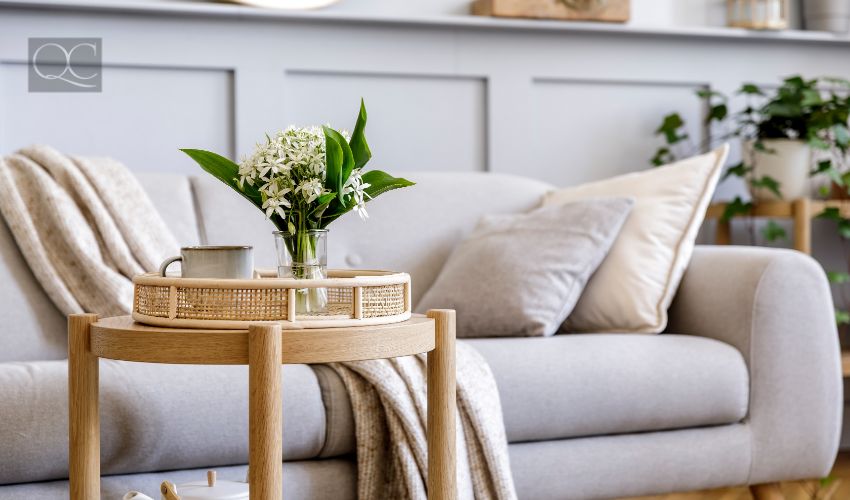
11. Business Management Software
If your goal is to be an interior decorator with your very own business, then it’s important to stay organized and keep track of your finances. This is where business management software will quickly become your best friend! Business management software can help you manage your clients, invoices, payments, and expenses.
There are all sorts of different business management software programs available to you. That said, the most popular ones include QuickBooks, Sage 50 Accounts, and Xero.
It’s important to choose a business management software program that fits your specific needs. If you’re not sure which one to choose, ask your fellow interior decorators for their recommendations. Chances are, they’ve tried out a few different programs and have a favorite one that they swear by!
Fun Fact: This insightful article by ProofHub provides a list of 19 additional business management software that you can look into as well!
12. Your Network
Last, but certainly not least, is your professional network. This is undoubtedly one of the MOST important tools for interior decorators. However, this isn’t something that can be bought or downloaded. Rather, it takes time to develop your network and build relationships with other professionals in the home design industry.
That said, once you’ve done so, you’ll find that your network has a wealth of helpful information to share! This includes tips on where to buy furniture at wholesale prices, and suggestions for artists whose work they’d like represented in their homes or offices.
Building up your professional network will take some trial-and-error as well as patience. But once you’ve established yourself as someone who knows what they’re doing, other people will start paying attention and even begin referring you to people they know!
It’s important that you also stay connected with your fellow interior decorators. Don’t think of them as your competitors, but your allies. Not only can they help keep you up-to-date on the latest trends and techniques; they can offer feedback on how they’ve used certain products or services successfully in their own homes.
This type of advice is invaluable!

As an aspiring interior decorator, it’s important that you have the right tools at your disposal. This includes everything from measuring tape to business management software.
It’s also important to develop your professional network and stay connected with other professionals in the industry. By doing so, you’ll be able to learn from their experiences and get helpful advice on how to be successful as an interior decorator.
We hope that this article has been helpful and provided you with some useful tools for your upcoming career! Thank you for reading!

